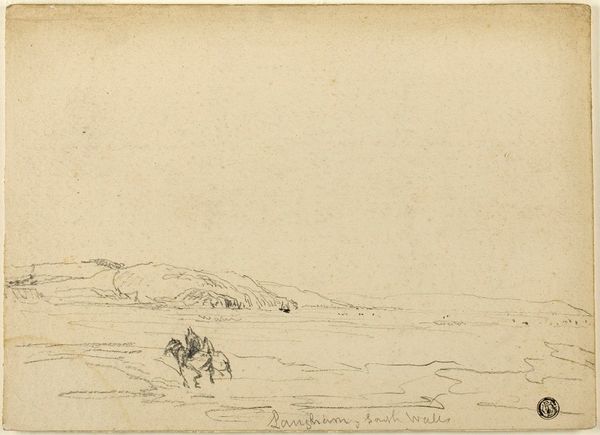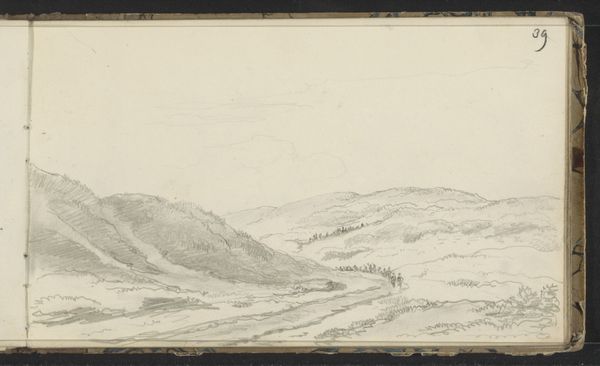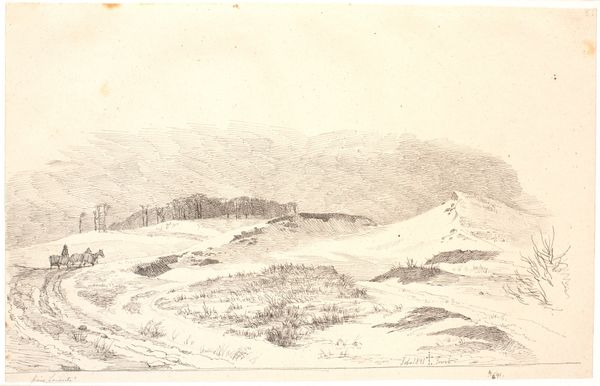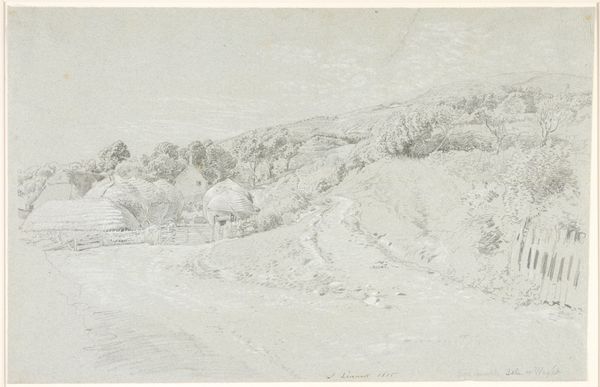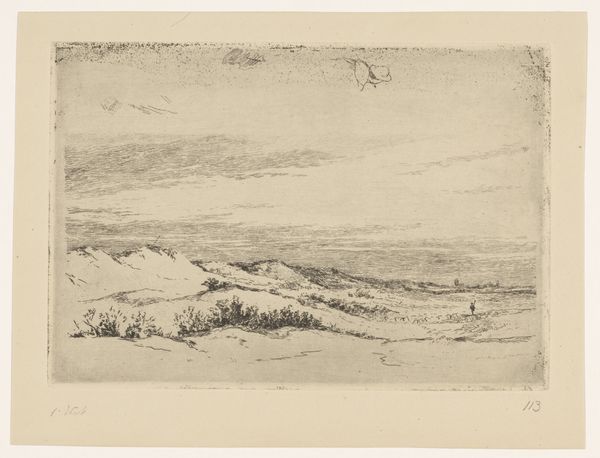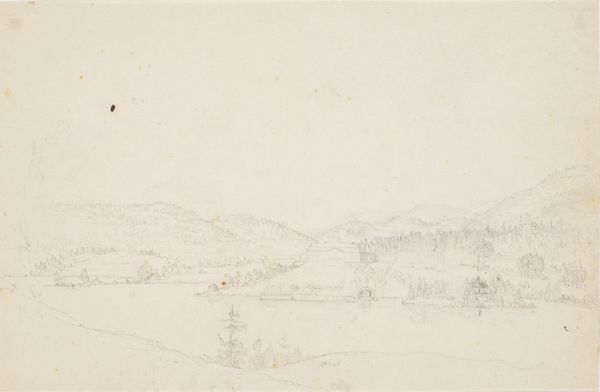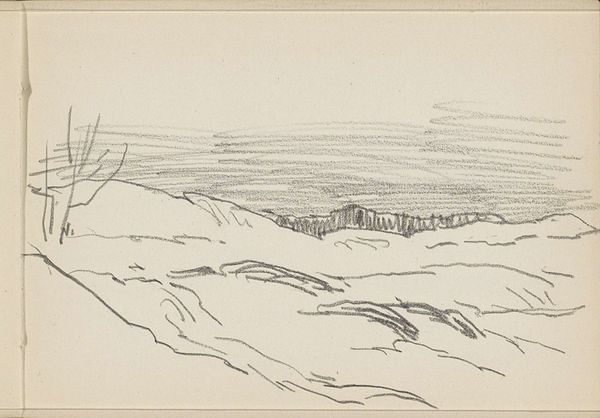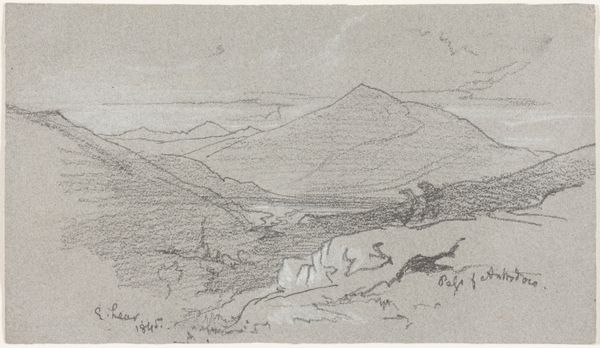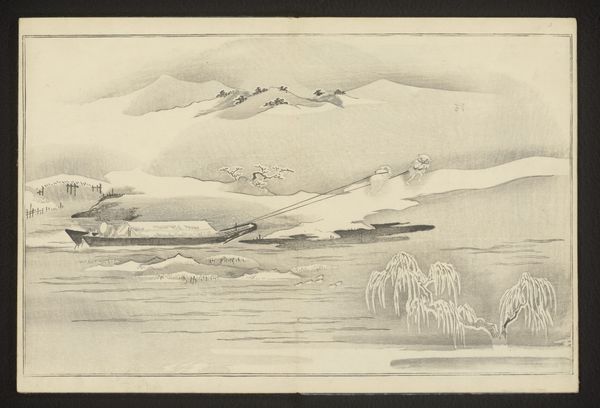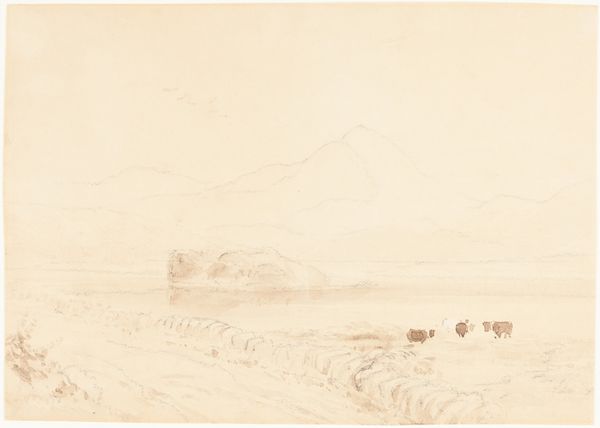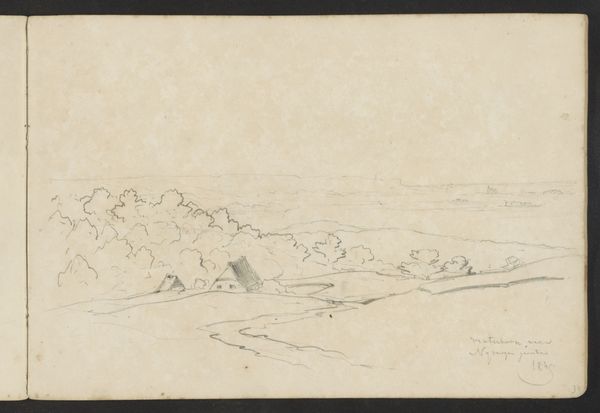
drawing, pencil
#
drawing
#
amateur sketch
#
light pencil work
#
quirky sketch
#
pencil sketch
#
landscape
#
personal sketchbook
#
road
#
idea generation sketch
#
sketchwork
#
pen-ink sketch
#
pencil
#
horse
#
sketchbook drawing
#
genre-painting
#
sketchbook art
#
realism
Copyright: Rijks Museum: Open Domain
Johannes Tavenraat sketched this drawing, "Man with a Draught Horse in Park Cleverberg," in 1844. Here, the horse and ploughman is an ancient symbol deeply embedded in the human psyche. Throughout history, from the fields of ancient Egypt to the Roman Empire, the motif of the ploughman has been a constant. In antiquity, the figure of the farmer was associated with the idea of hard work and resilience. Consider the Greek myth of Triptolemus, who spread agriculture across the world; an early representation of human progress. This iconography recurs in modern art. The socialist-inspired artworks of the 20th century show labourers tilling the soil, linking physical labour with political revolution. In each iteration, the ploughman's emotional resonance remains, evoking themes of human struggle, perseverance, and connection to the land. This archetypal figure engages us on a subconscious level, resonating with our collective memory of human endeavour.
Comments
No comments
Be the first to comment and join the conversation on the ultimate creative platform.
